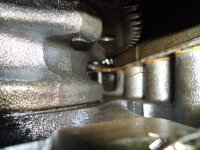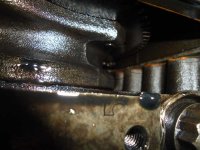peter karl
New member
Hi all,
I noticed that I have coolant water lands* in the sump.The engine was overhauled and since then has only run 500 hrs.
I did not use it for 5 weeks and when I started the engine now and it ran fine, no misfire. No indication of fault in gauges.
The only difference was a bit more black smoke in idle speed.
Before I started the engine, I checked the coolant and I discovered that it was empty. I then filled it up and started the
engine, as mentioned above no particular problem, I checked for leeks and did not see any water coming out.
After 1/2 hour I stopped the engine and the next morning checked the oil and found that it was up to the end of the oil
stick.
This is when I opened the oil discharge valve and found it full of plain water. About 5 gallons!
Then opening the inspection lid on the right bank, I did not find any water there. Everything looked good.
The left bank is impossible to reach due to very restricted space in the engine room.
I live in Borneo (Malaysia) and it is almost impossible to find any one with such technical knowledge regarding
these engines.
Has anyone on this forum ever had a similar problem? Or has any idea what could be the cause ?
I noticed that I have coolant water lands* in the sump.The engine was overhauled and since then has only run 500 hrs.
I did not use it for 5 weeks and when I started the engine now and it ran fine, no misfire. No indication of fault in gauges.
The only difference was a bit more black smoke in idle speed.
Before I started the engine, I checked the coolant and I discovered that it was empty. I then filled it up and started the
engine, as mentioned above no particular problem, I checked for leeks and did not see any water coming out.
After 1/2 hour I stopped the engine and the next morning checked the oil and found that it was up to the end of the oil
stick.
This is when I opened the oil discharge valve and found it full of plain water. About 5 gallons!
Then opening the inspection lid on the right bank, I did not find any water there. Everything looked good.
The left bank is impossible to reach due to very restricted space in the engine room.
I live in Borneo (Malaysia) and it is almost impossible to find any one with such technical knowledge regarding
these engines.
Has anyone on this forum ever had a similar problem? Or has any idea what could be the cause ?



